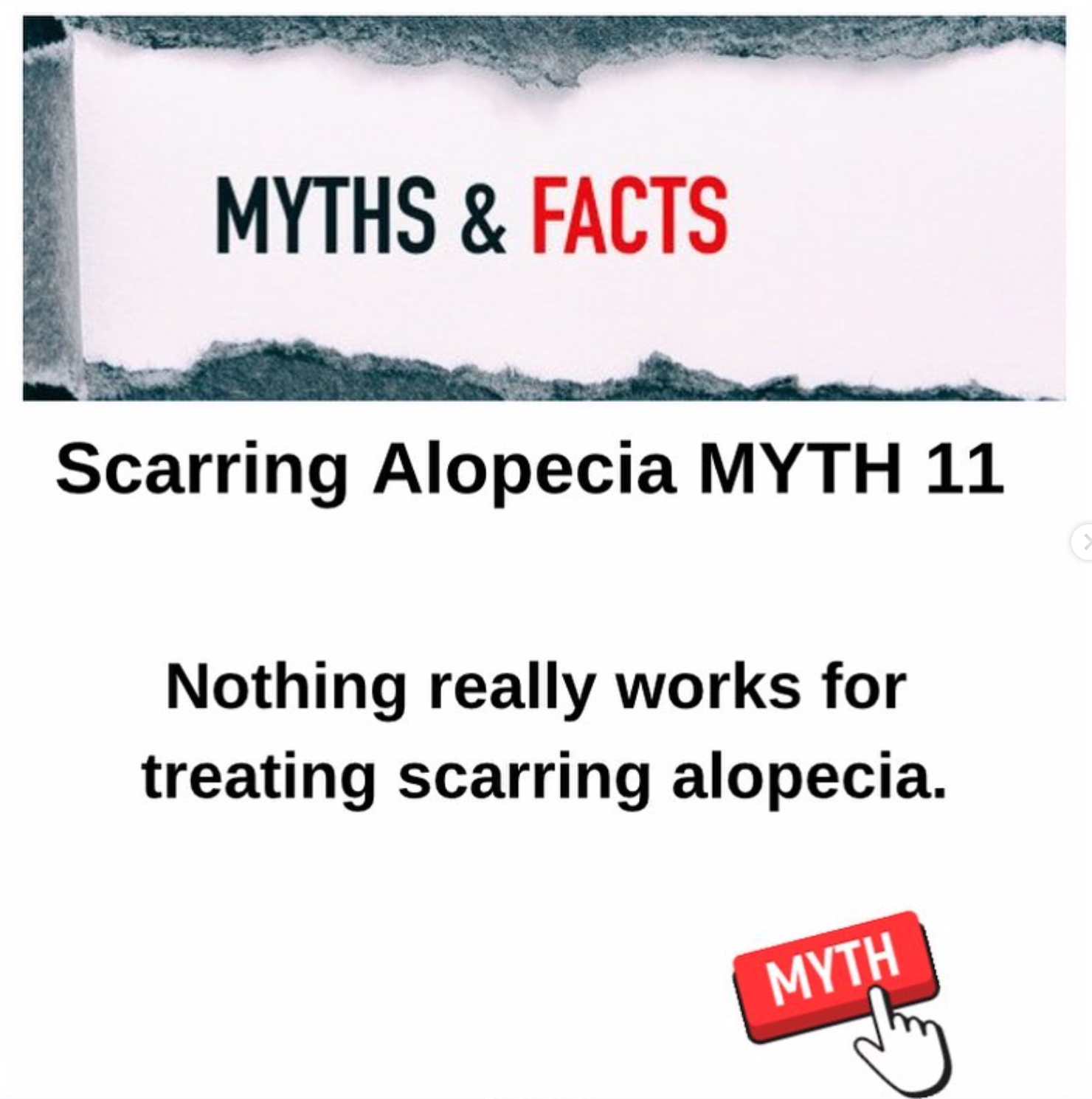National Scarring Alopecia Awareness Month (Day 26, Myth 11): Does anything really work for scarring alopecia?
Many Treatments Carry the Potential to Help Scarring Alopecia - Provided They are Good Ones.
Occasionally a new patient with scarring alopecia tells me they have tried everything and nothing works.
There are often three misconceptions that are important to review in this situation.
1) Some Patients Have Just Not Tried Treatments That Carry A Reasonable Chance of Helping
Some patients who say they have tried everything have not actually pursued all that many of the first line treatments or second line treatments. That’s not to say that these treatments are going to be acceptable for everyone. It’s just to say that one cannot really conclude he or she has tried everything. Many patients have tried various supplements and vitamins and shampoos and lasers and stem cell treatments and PRP and have spent a great deal of time and money. But none of these are considered “first line” treatments and none of these are expected to have a consistently good effect for helping most patients with scarring alopecia. One needs to consider using treatments with good study to back them up!
2) Some Patients Give up Trying Way Too Soon
Many patients who have tried a treatment have not used it long enough to know if it’s working. It takes a few months to really get a sense if a treatment is going to help. Some treatments, such as hydroxychloroquine in lichen planopilaris for example, take up to 6-9 months to really have full effect on bringing hair loss to a halt. Symptoms do go away quickly with many treatments but the actual halting of hair loss takes a while.
3) Some Patients Don’t Know What They Should be Looking For
Some patients who feel that nothing works have been given an incorrect framework as to what actually constitutes “treatment success.” The main goal of treatment for a patient with scarring alopecia is to stop it from getting worse. If we can get back hair and improve density, that is certainly something we strive to do - but the main goal is to stop it from getting worse and worse over time. The primary goal is not to regrow the hair back. (Fortunately in early stages of treatment for scarring hair loss we do sometimes grow some back).
A patient who says “I have used my doctor’s treatment for 2 years and have seen absolutely no change in my hair density” is saying to me that they have achieved some degree of treatment success. If that patient’s expectation was actually that they were going to regrow back his or her hair, they are going to be quite disappointed by the treatment outcome. A patient with scarring alopecia who stops his or her hair loss has certainly achieved some amount of success.
Conclusion
When it comes to treating scarring alopecia, it is uncommon that “nothing” actually works provided first and second line treatments have been used. It may take several treatment trials to find something that works and many, many months or frustrating trial and error - but often something is found that truly helps.
This article was written by Dr. Jeff Donovan, a Canadian and US board certified dermatologist specializing exclusively in hair loss.

